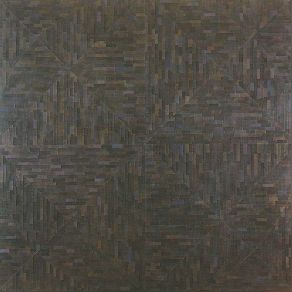The Crowd
Download links and information about The Crowd by Rova. This album was released in 1995 and it belongs to Jazz, Avant Garde Jazz genres. It contains 5 tracks with total duration of 01:18:40 minutes.

|
|
|---|---|
| Artist: | Rova |
| Release date: | 1995 |
| Genre: | Jazz, Avant Garde Jazz |
| Tracks: | 5 |
| Duration: | 01:18:40 |
| Buy it NOW at: | |
| Buy on iTunes $9.99 | |
Tracks
[Edit]| No. | Title | Length |
|---|---|---|
| 1. | Sport (feat. Jon Raskin, Larry Ochs, Andrew Voight & Bruce Ackley) | 3:05 |
| 2. | The Crowd (feat. Jon Raskin, Larry Ochs, Andrew Voight & Bruce Ackley) | 19:12 |
| 3. | Room (feat. Jon Raskin, Larry Ochs, Andrew Voight & Bruce Ackley) | 10:39 |
| 4. | Knife in the Times 1-8 (feat. Jon Raskin, Larry Ochs, Andrew Voight & Bruce Ackley) | 29:25 |
| 5. | Terrains (feat. Jon Raskin, Larry Ochs, Andrew Voight & Bruce Ackley) | 16:19 |
Details
[Edit]Originally constructed as a much longer piece for a commission by composer John Adams for the Bay area saxophone quartet to perform a concert of original material, this shorter, tighter version was heavily influenced by the writings of Nobel laureate Elias Canetti's works. Most notably, his classic sociological text Crowds and Power. This album was recorded in a French studio while on tour in 1985. How a book about the fascistic implications of crowds, their organization, circumstances surrounding their coming into being, and how they are manipulated from outside their framework and a musical work of this size and statue have anything in common is a guess for anyone who hasn't absorbed both sources. But it doesn't matter. The Crowd was a turning point for the original ROVA, which still contained Andrew Voigt. From the freewheeling excesses of their earlier recordings on Meta Language and the more structural framework for improvisation employed on their Soviet tour of 1983 to this piece, ROVA had become a finely tuned machine. The Crowd is seamless in both composition and execution after the first few minutes that is "Sport," and directly into the nearly 20-minute title work it becomes impossible for the listener to know what was written and what was improvised. Certainly each member of this group solos, but it is the simultaneous improvisation and the harmonic texture of the composition itself that winds and weaves its way not only though different musical territory (there is even a section that nods toward Adams and Philip Glass), but diverse emotional ground is covered as well. To call this music "jazz" would be both accurate and a mistake, for it is both entirely jazz and not at all; to call it "free music" or "new music" would be just plain lazy and stupid; to call this ROVA music would make sense. From swing to Baroque quotations to minimalist serialism, free jazz, Herbie Nichols, Thelonious Monk, and even ragtime, the Crowd contains every kind of human voice, all together but as separate beings, just like those in Canetti's book. Where they are separate, however, is in the multivalent language they express and signify: As a group, or a "crowd," ROVA uses a self-created language to express the needs of each of its individual players, all borrowing and lending from one another as ideas or structural framework dictate. In Canetti's book, the individual is consumed within the frightening crowd, no longer conscious at all of her or his own motives, but only there to serve the ends of power. That ROVA can mirror this sentiment and thought process so well with a recording is a phenomenal thing, that they can do it and make it a joy to listen to an encounter without knowledge of the original work is what made them so special at the time they recorded this. Bravo.